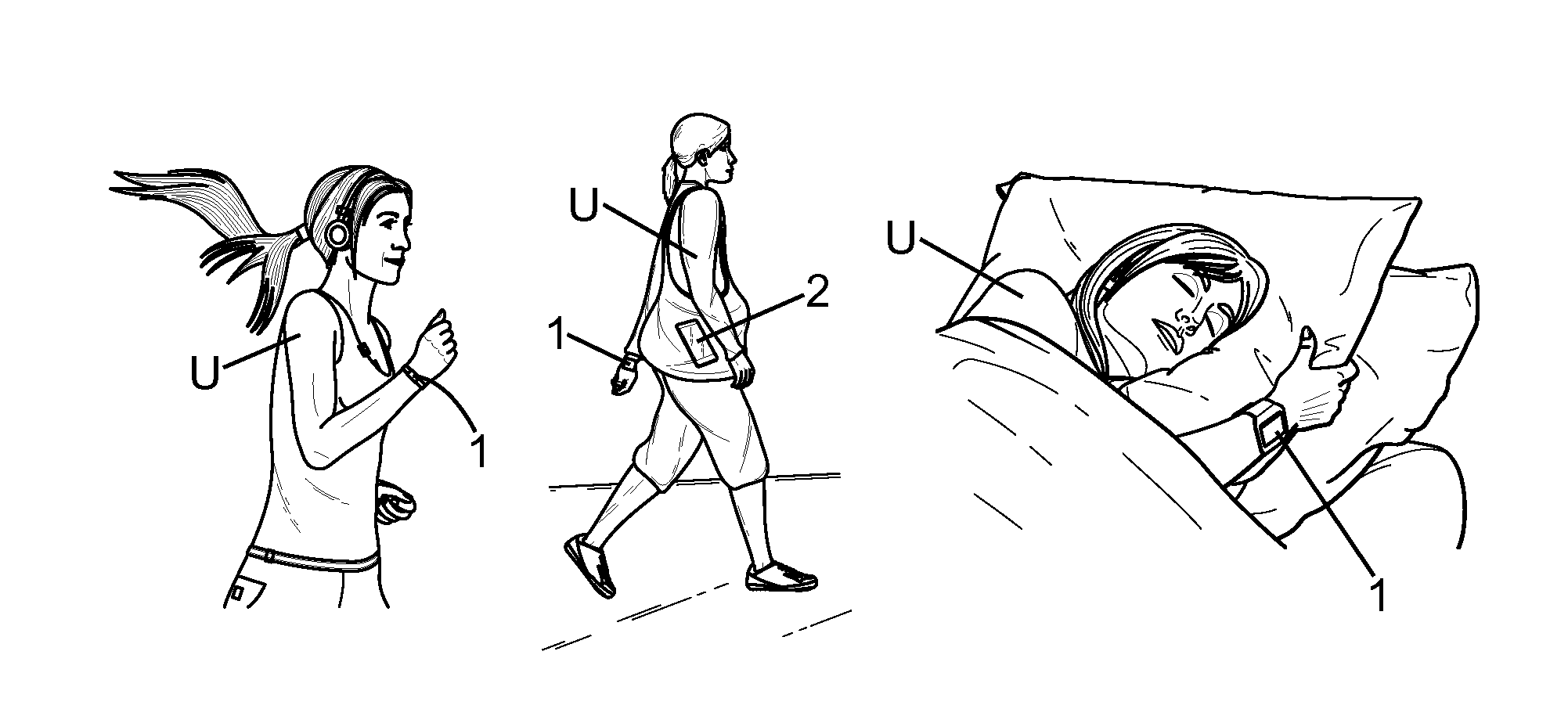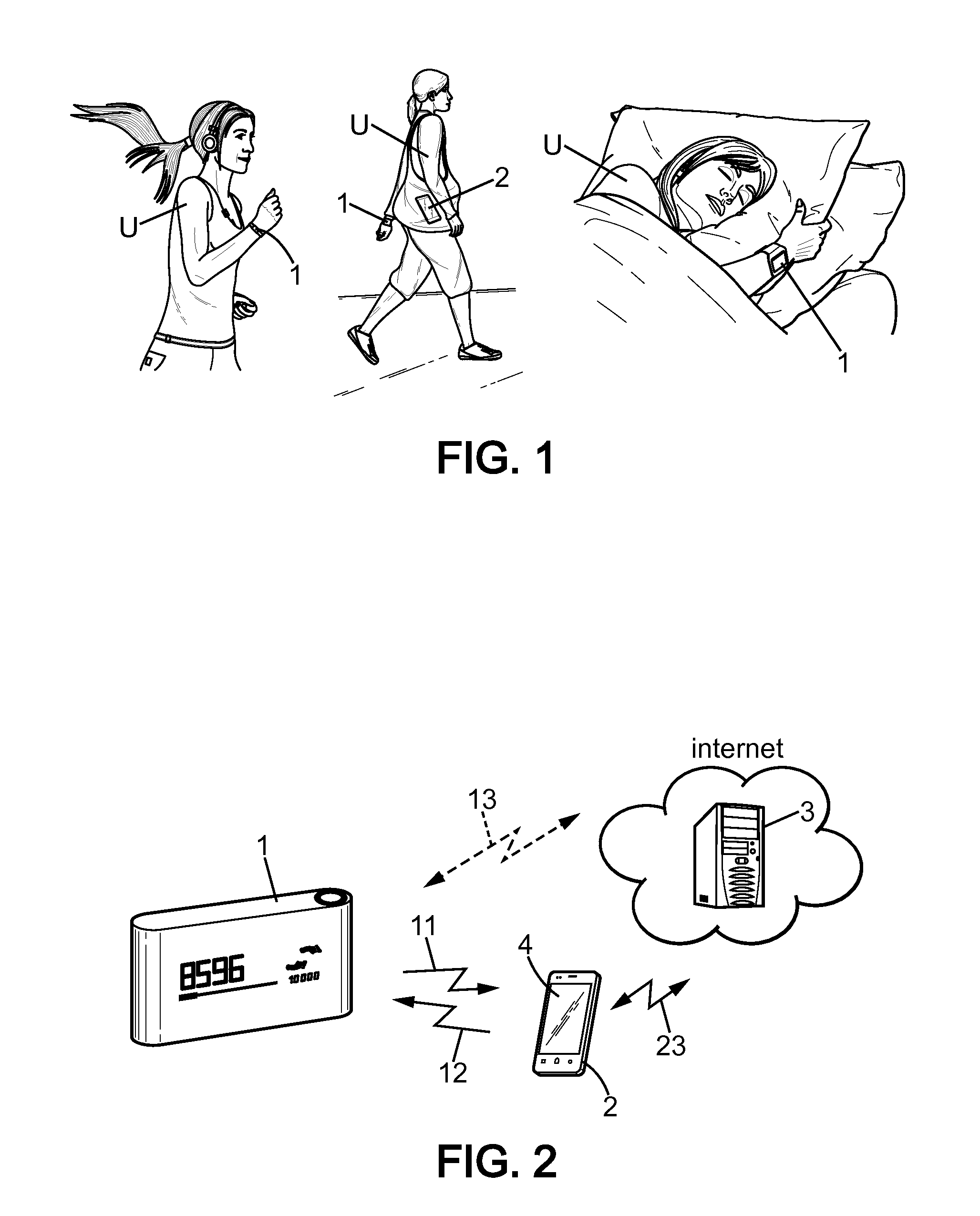System and Method to Recognize Activities Performed by an Individual
a technology of an individual and an activity, applied in the field of systems and methods to recognize activities performed by individuals, can solve problems such as detriment to the autonomy of the battery, and achieve the effects of accurate recognition of activities, low electrical power consumption, and simple computing operations
- Summary
- Abstract
- Description
- Claims
- Application Information
AI Technical Summary
Benefits of technology
Problems solved by technology
Method used
Image
Examples
Embodiment Construction
[0040]FIG. 1 shows a user U (also called “individual” in the following) in various everyday life activities, namely as illustrated running, walking and sleeping. Everyday life usually involves many types of activities, and also some activities like practising sports can be divided or classified in a more refined classification: standard jogging, fast running, gymnastics, biking, tennis, squash, ski, rowing, swimming, paddling, dancing, etc . . . .
[0041]According to the present disclosure, the user wears an activity monitoring device 1, worn at the wrist in the shown example. However, such an activity monitoring device 1 can be worn elsewhere, close to the body of the user, at the ankle, at the waist, at the neck, or even in a cloth or a shoe. Such an activity monitoring is configured to sense accelerations, and therefore can basically assess the type of activity undertaken by the user or at least the level of activity.
[0042]There is defined a set of predefined activities which compr...
PUM
 Login to View More
Login to View More Abstract
Description
Claims
Application Information
 Login to View More
Login to View More - R&D
- Intellectual Property
- Life Sciences
- Materials
- Tech Scout
- Unparalleled Data Quality
- Higher Quality Content
- 60% Fewer Hallucinations
Browse by: Latest US Patents, China's latest patents, Technical Efficacy Thesaurus, Application Domain, Technology Topic, Popular Technical Reports.
© 2025 PatSnap. All rights reserved.Legal|Privacy policy|Modern Slavery Act Transparency Statement|Sitemap|About US| Contact US: help@patsnap.com



